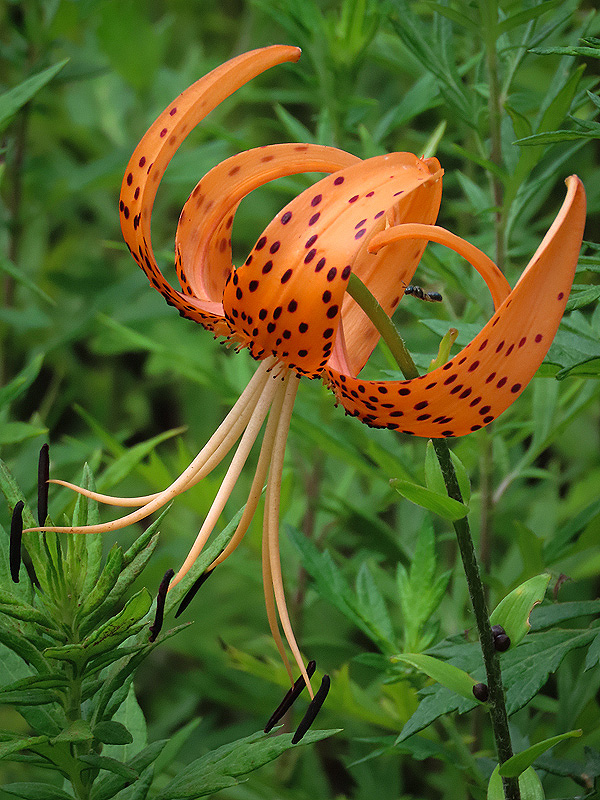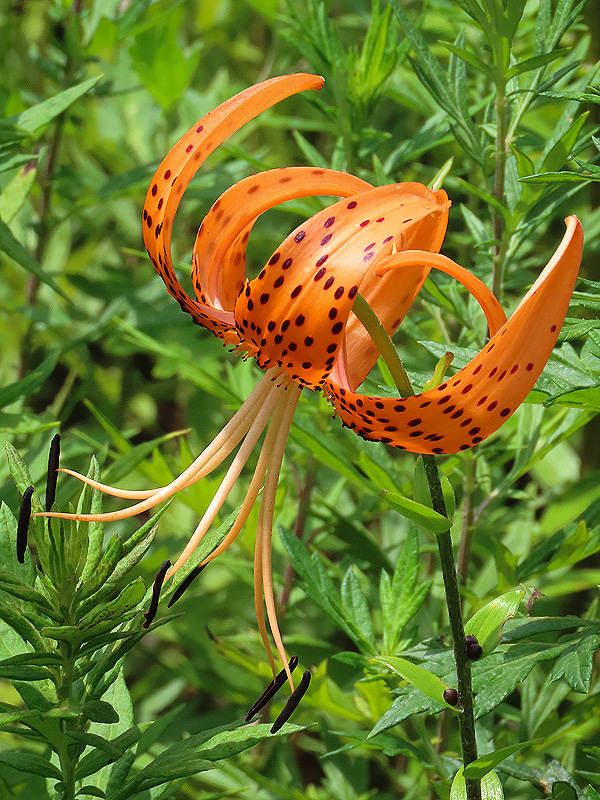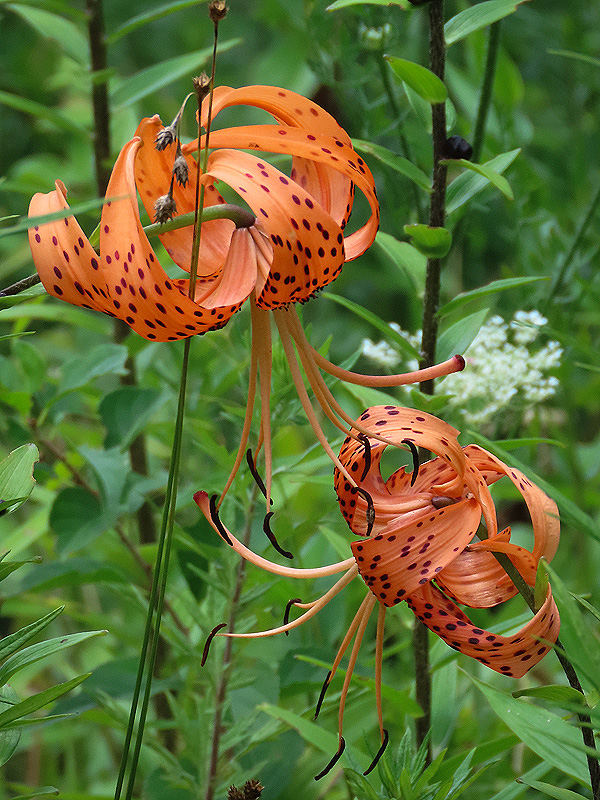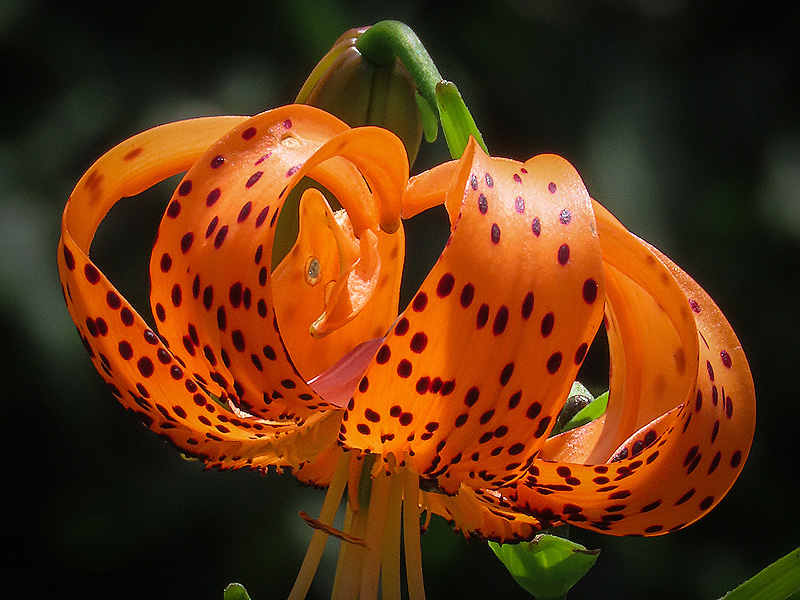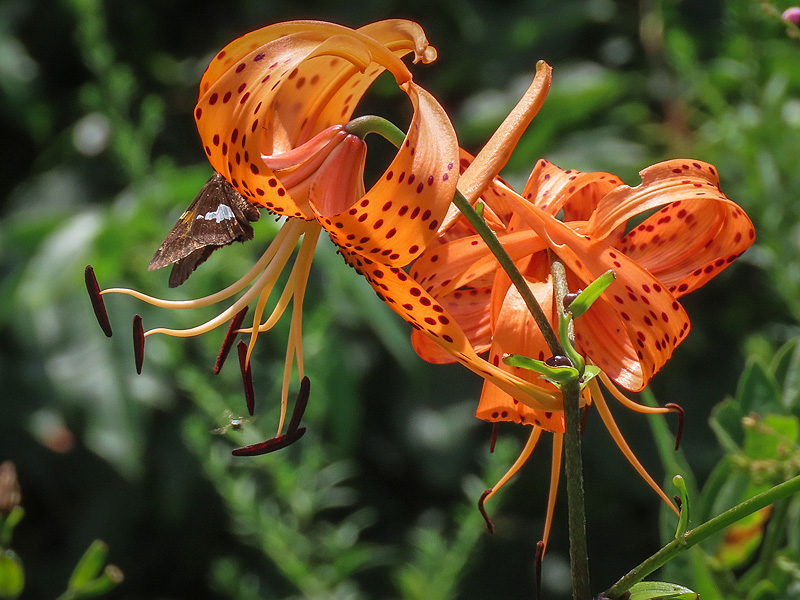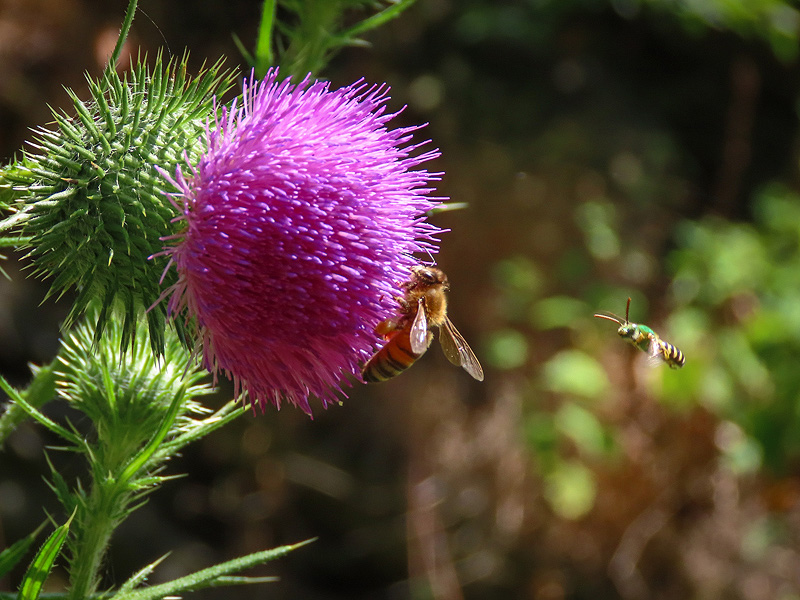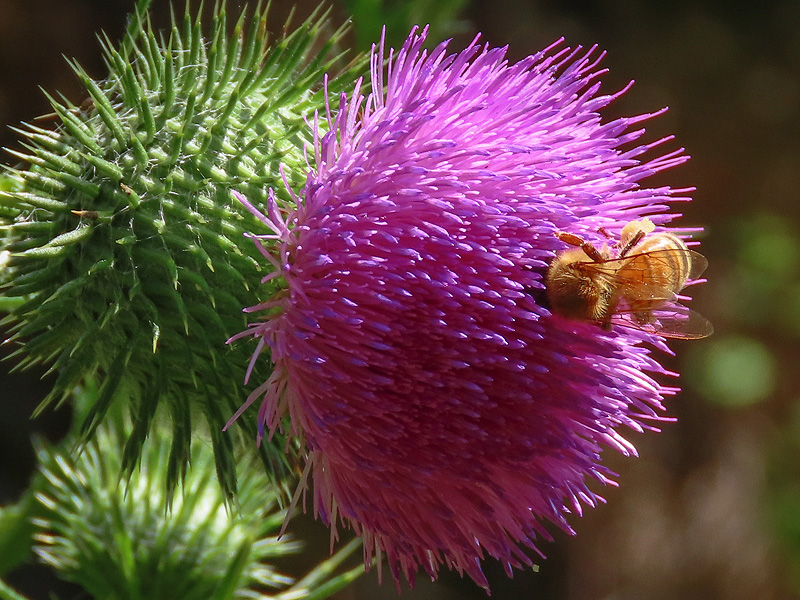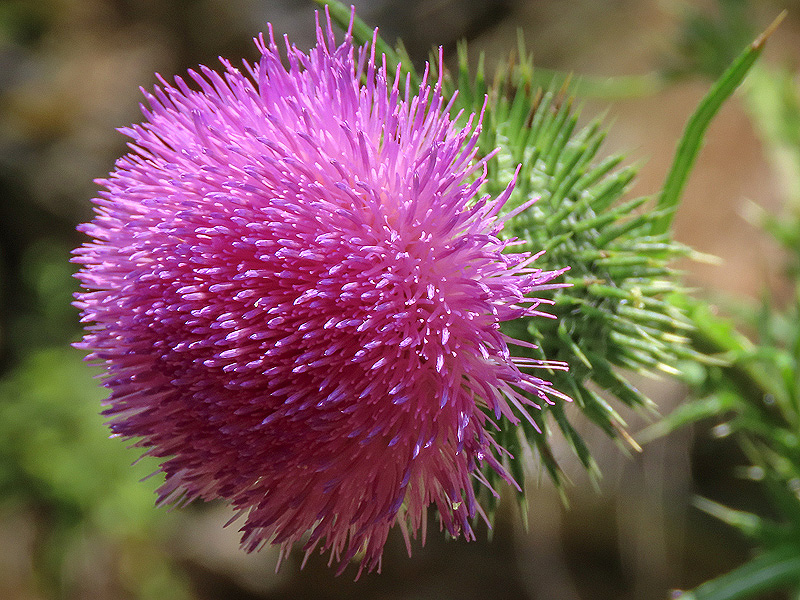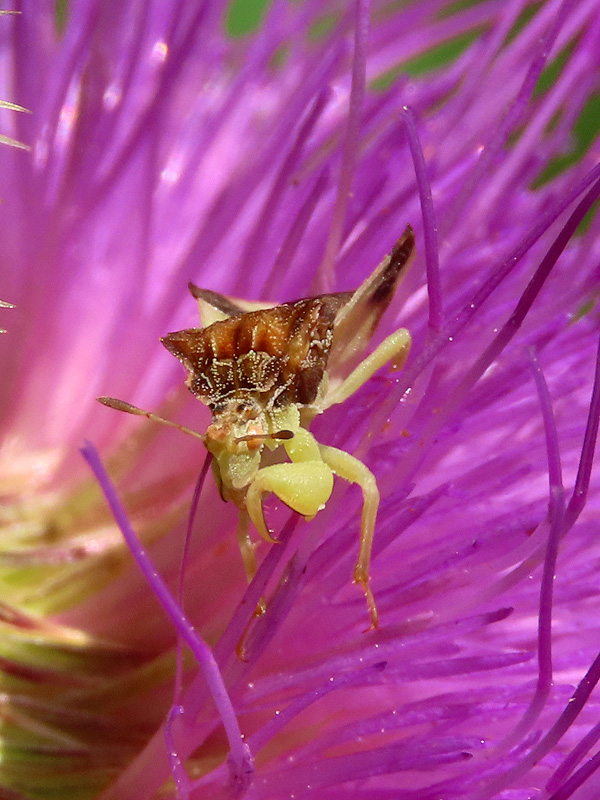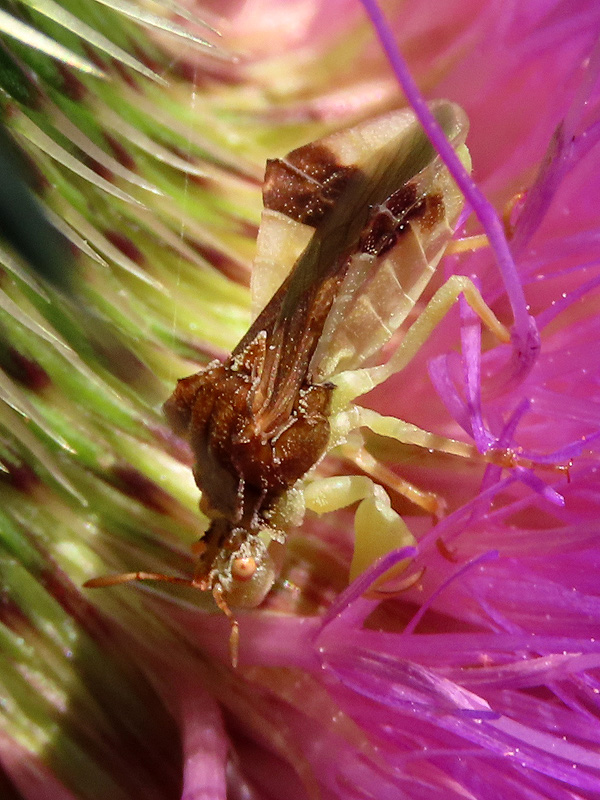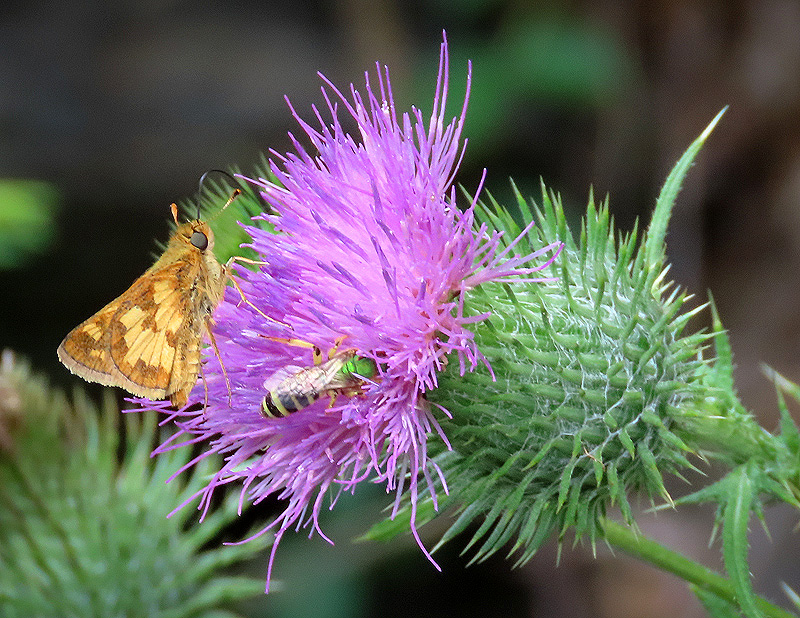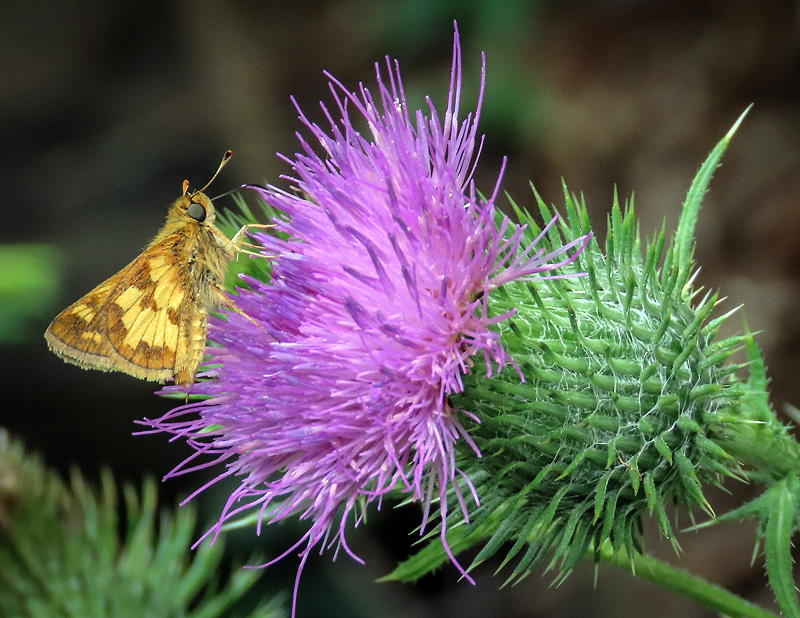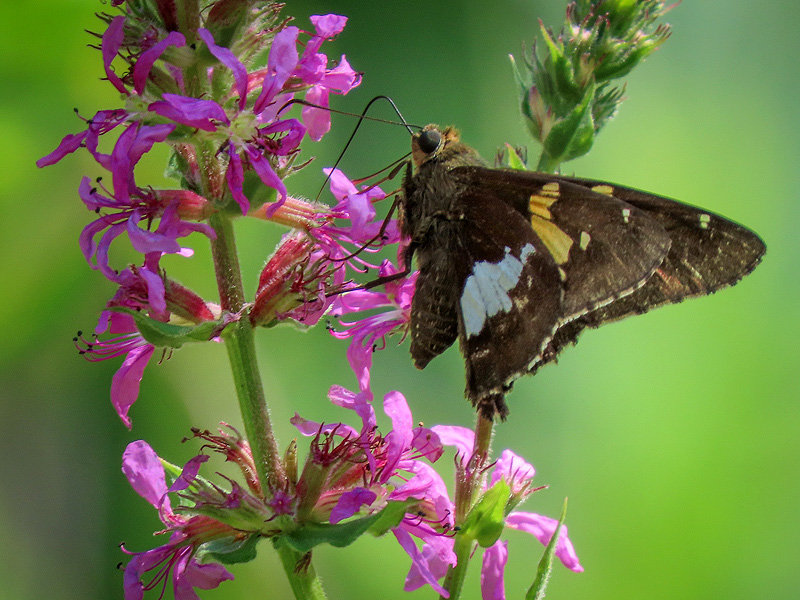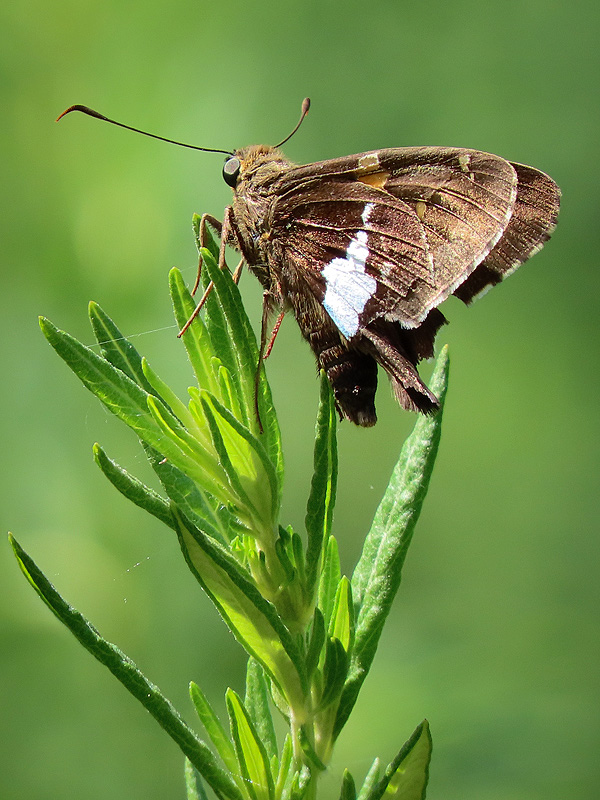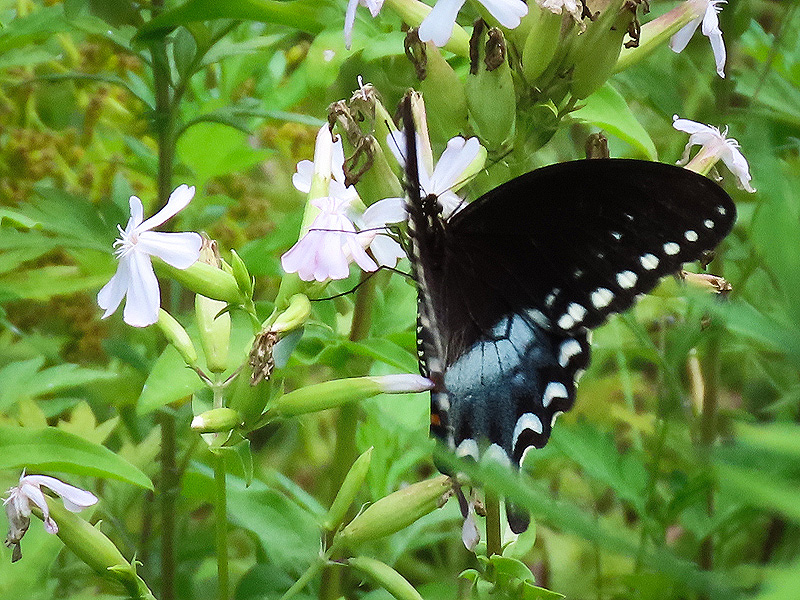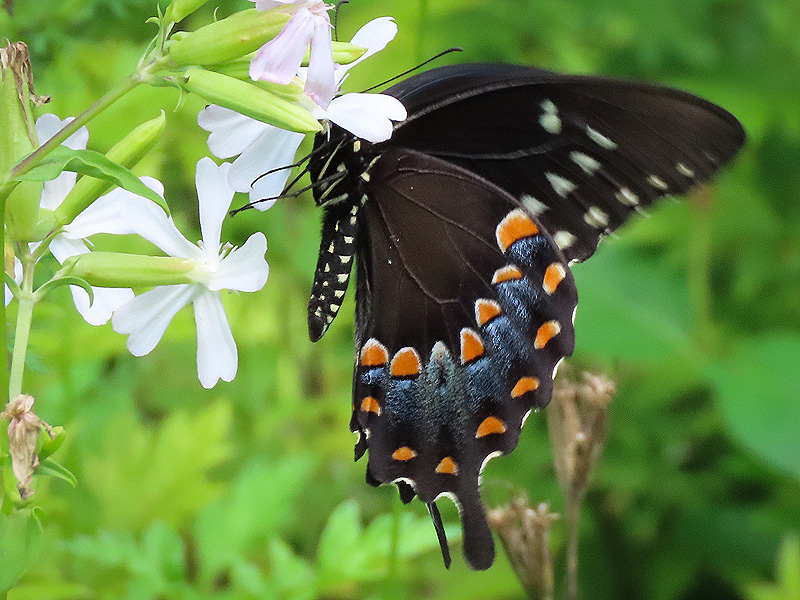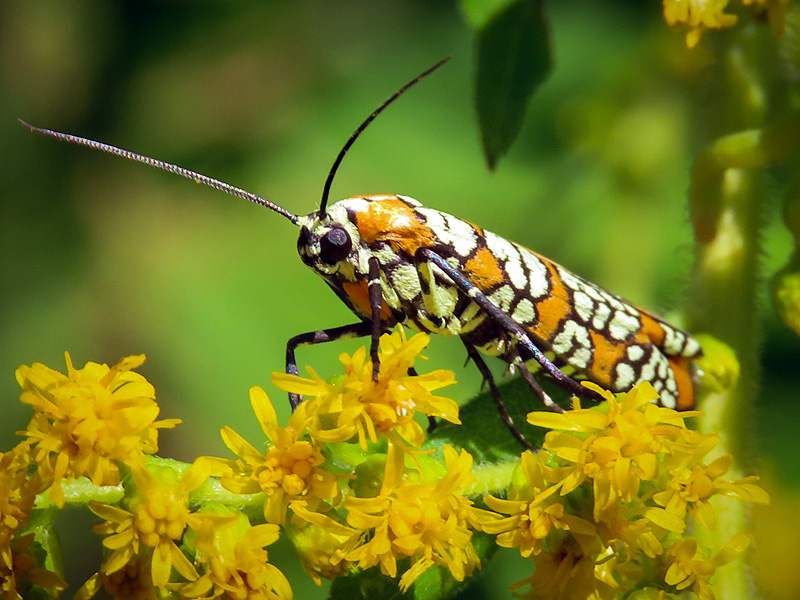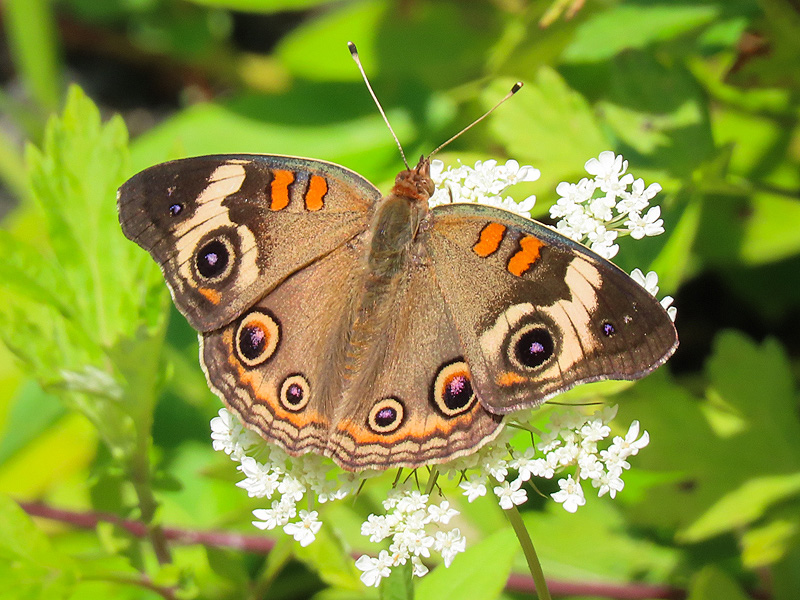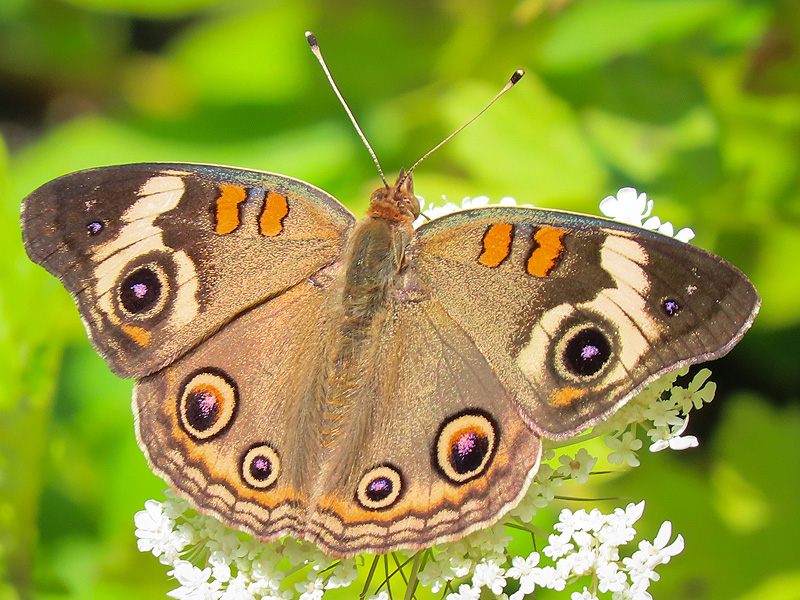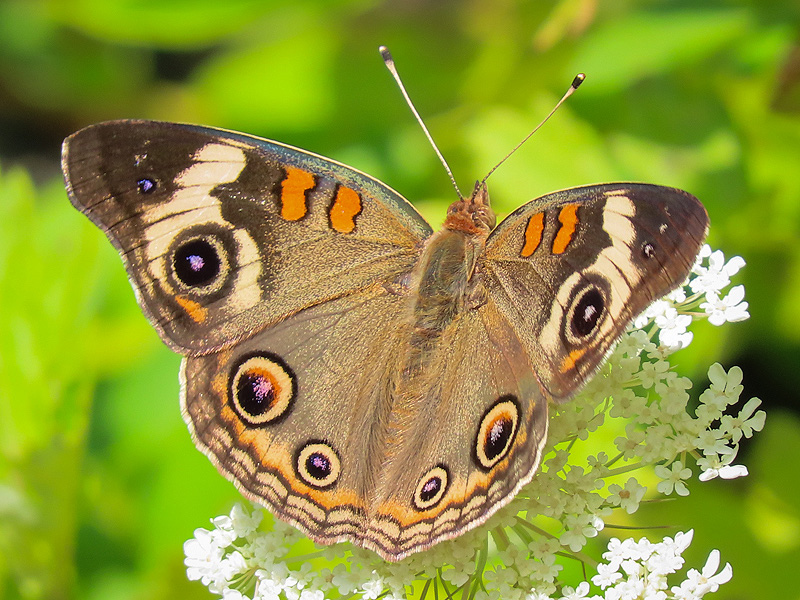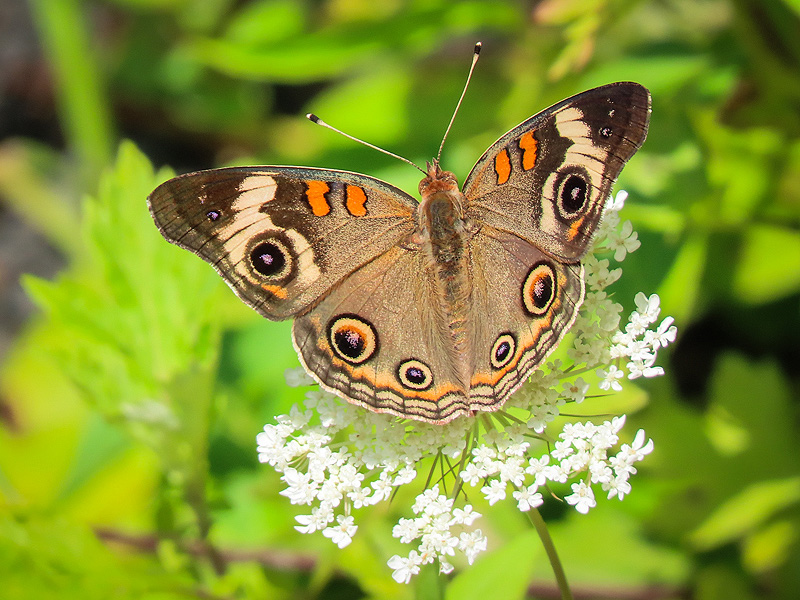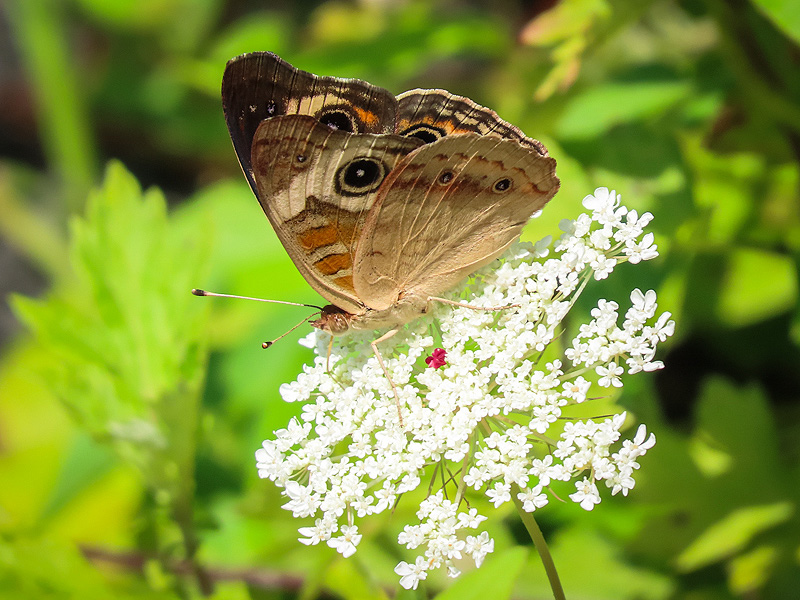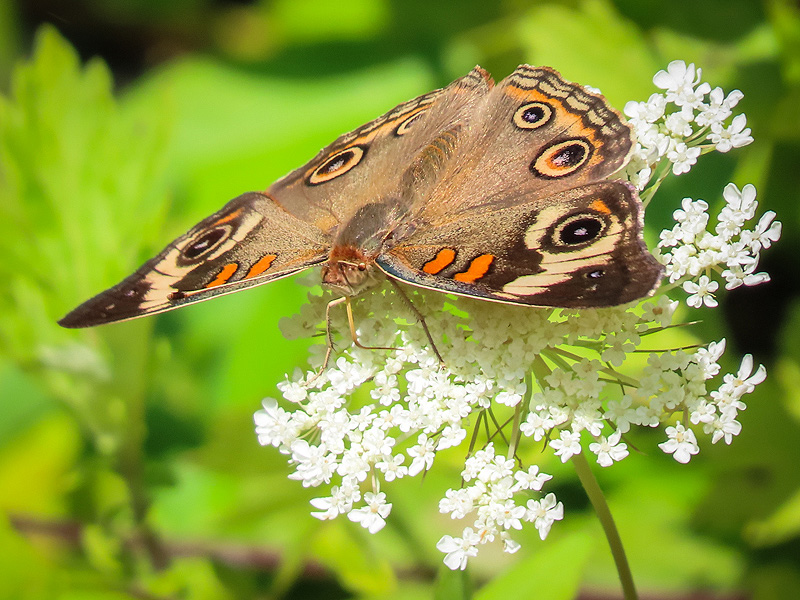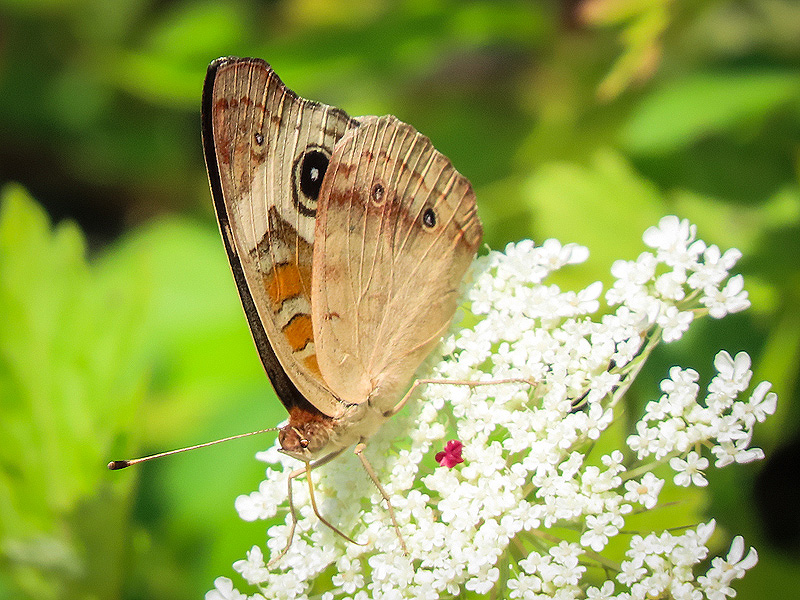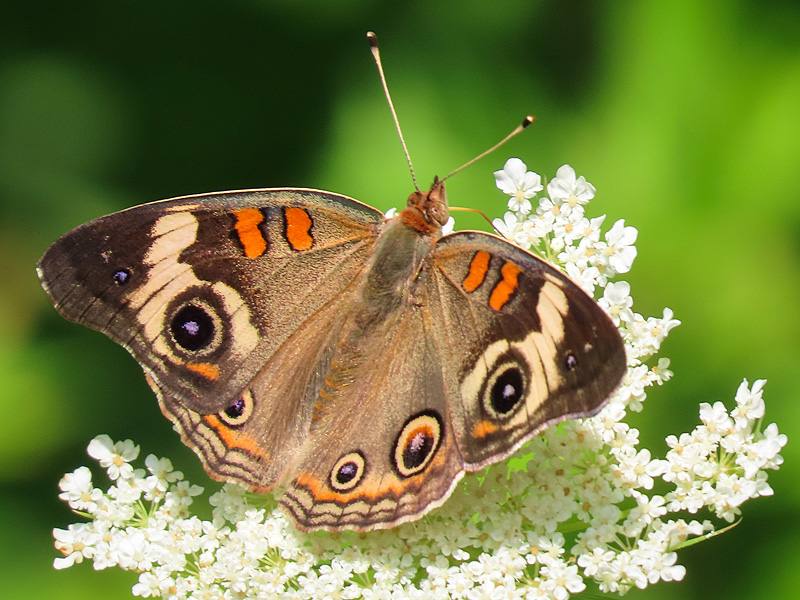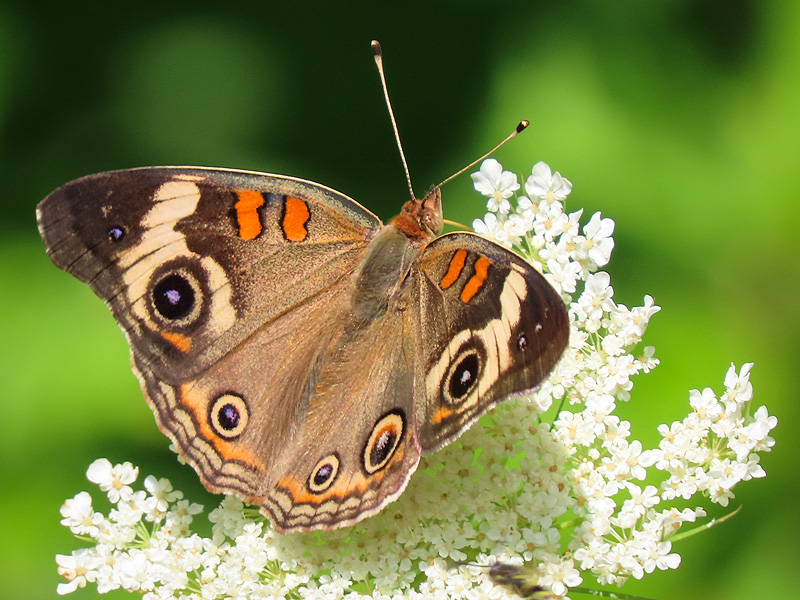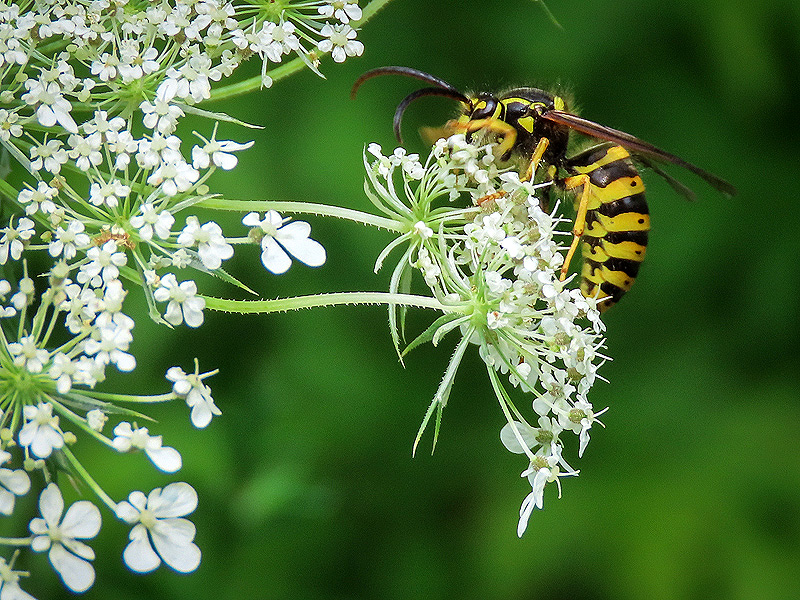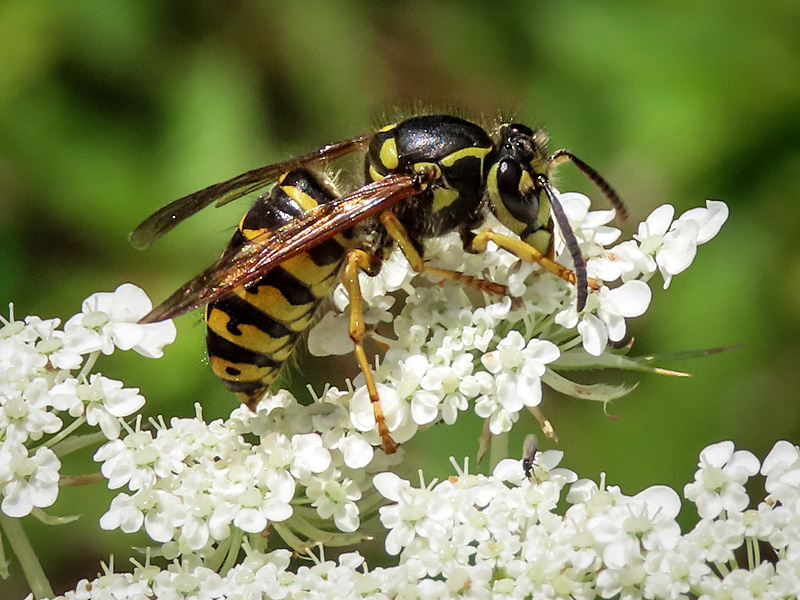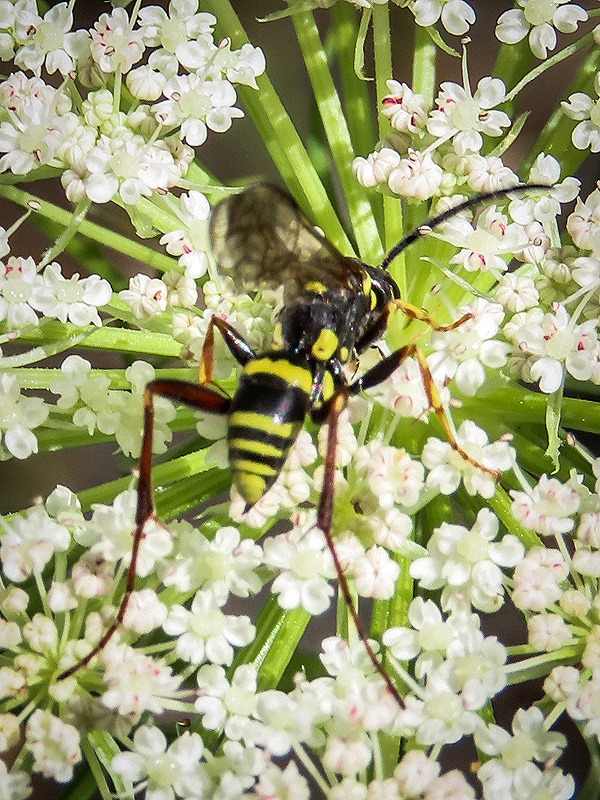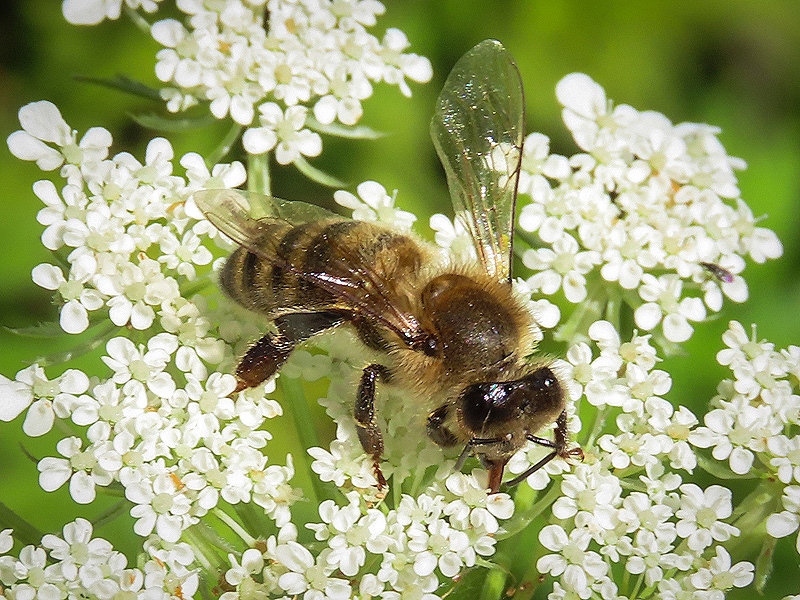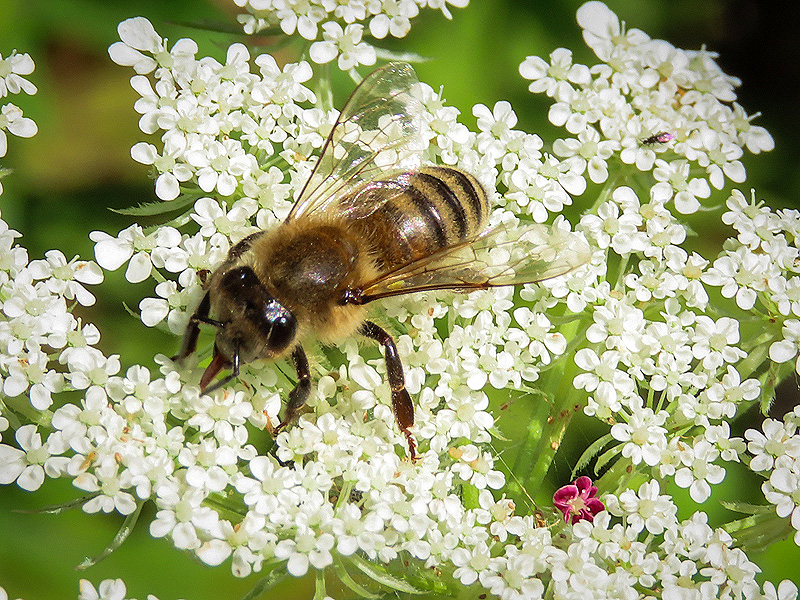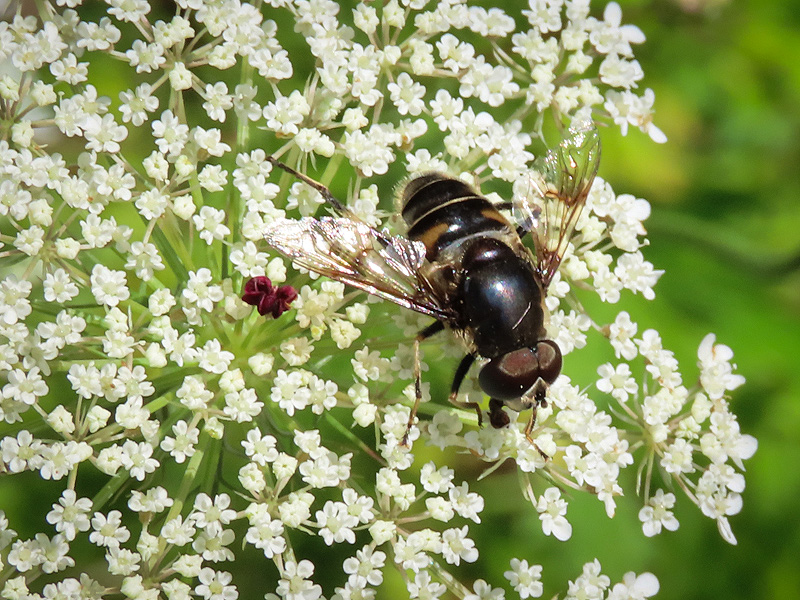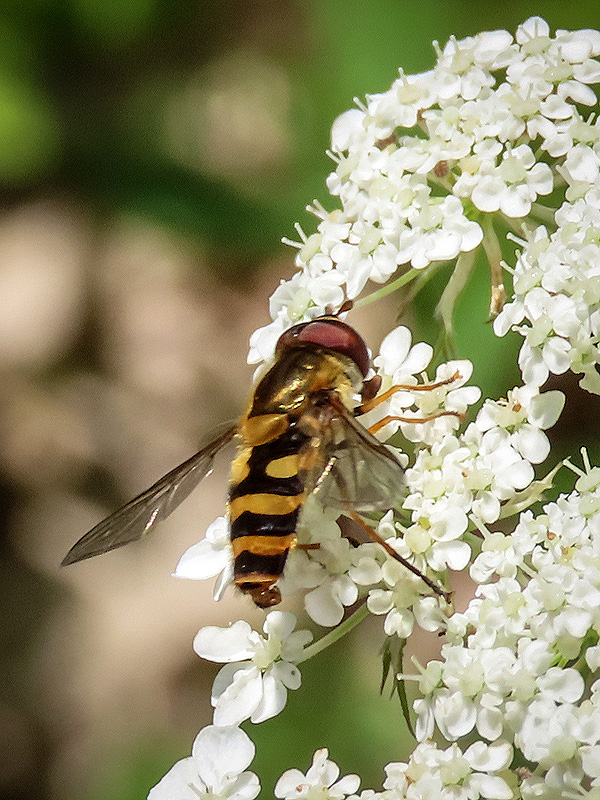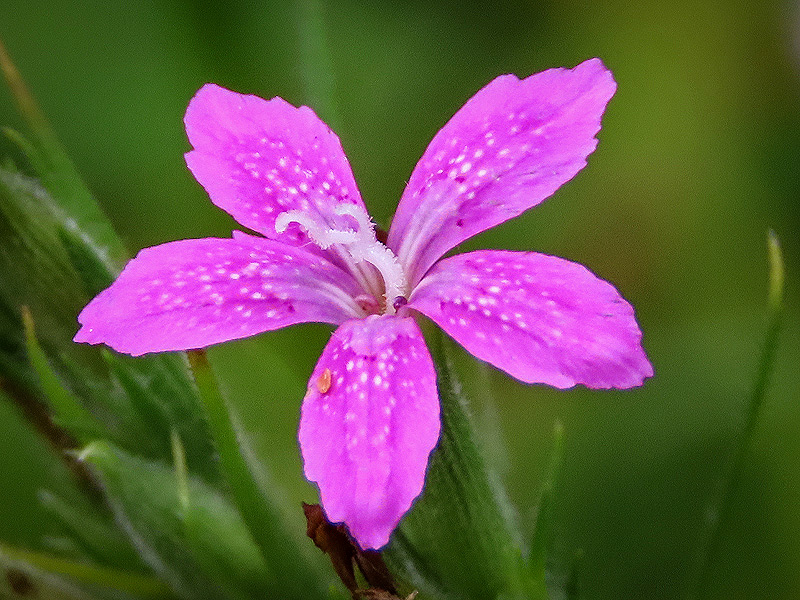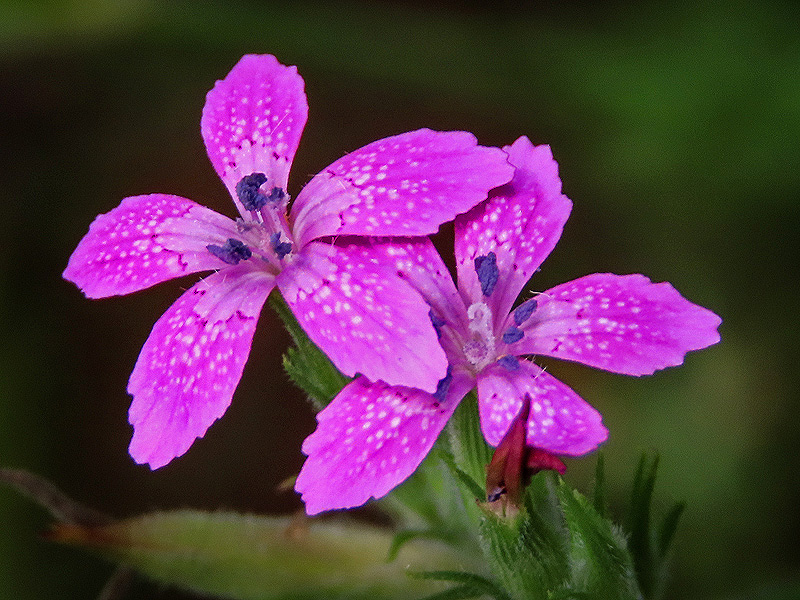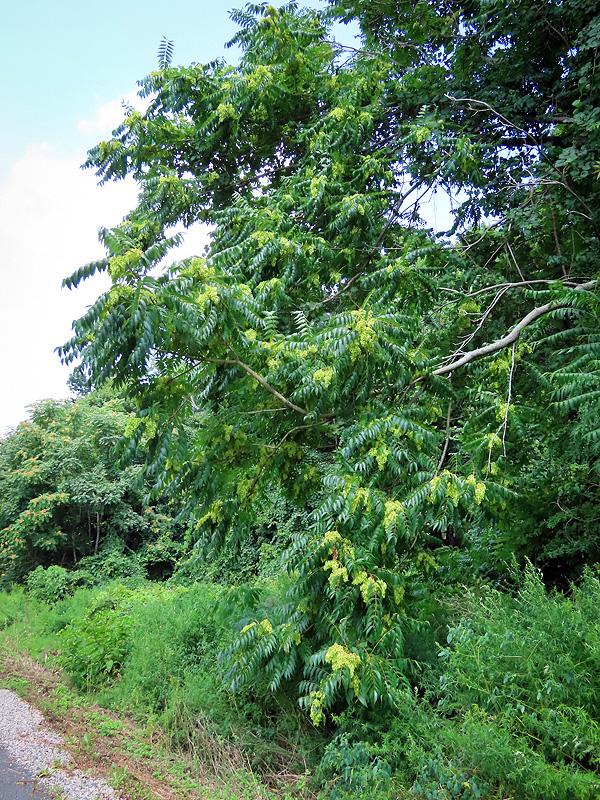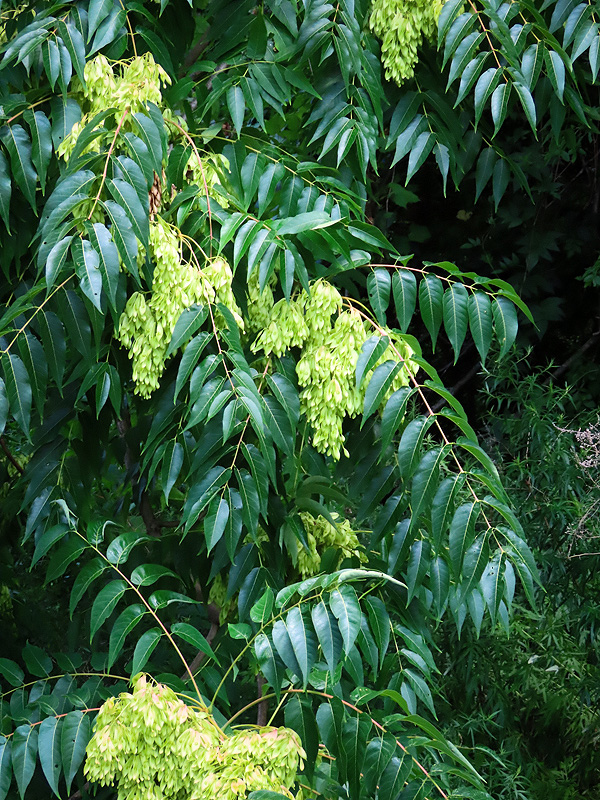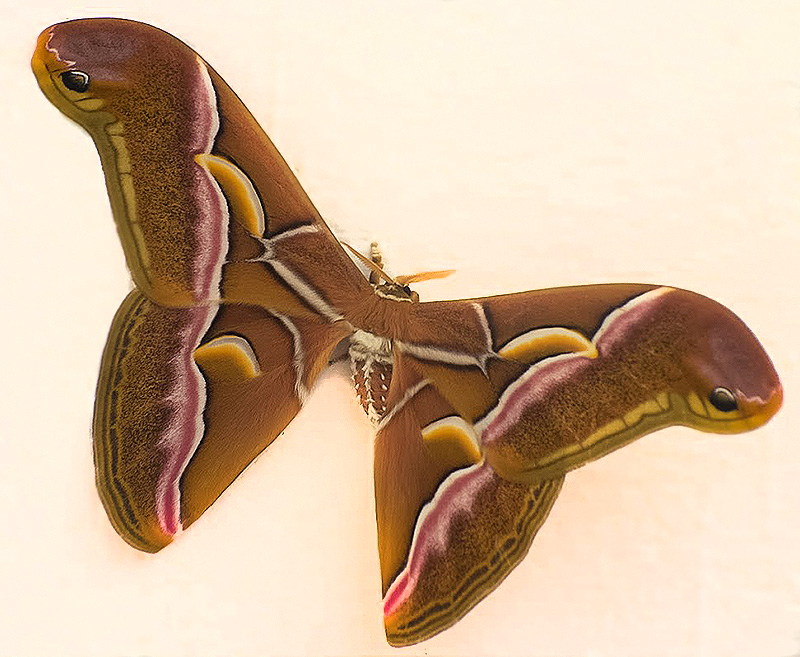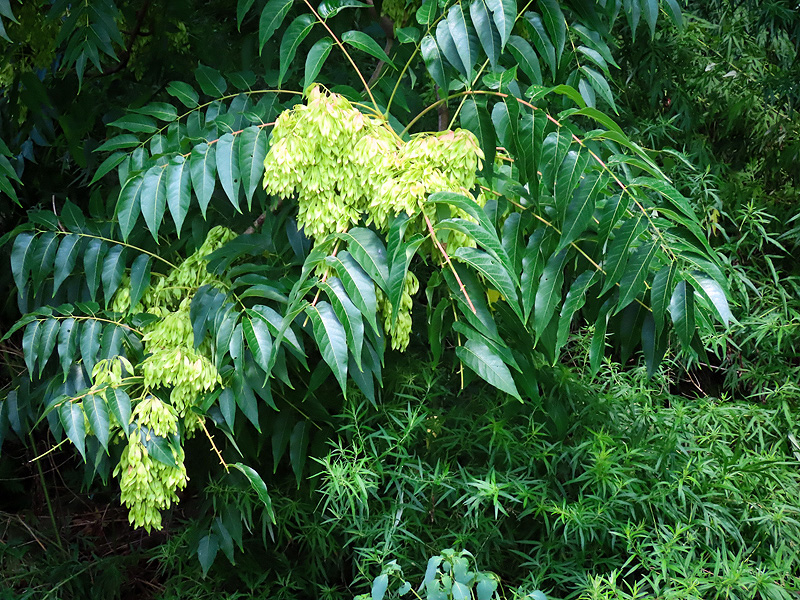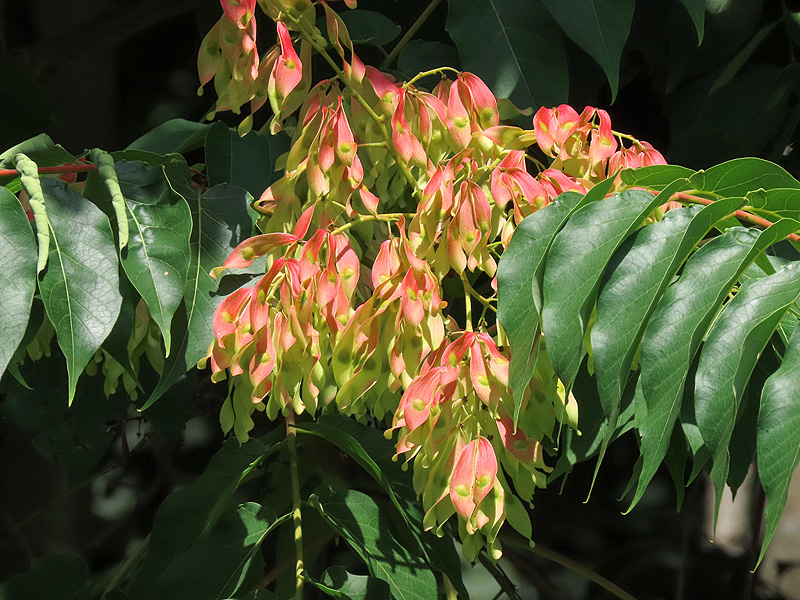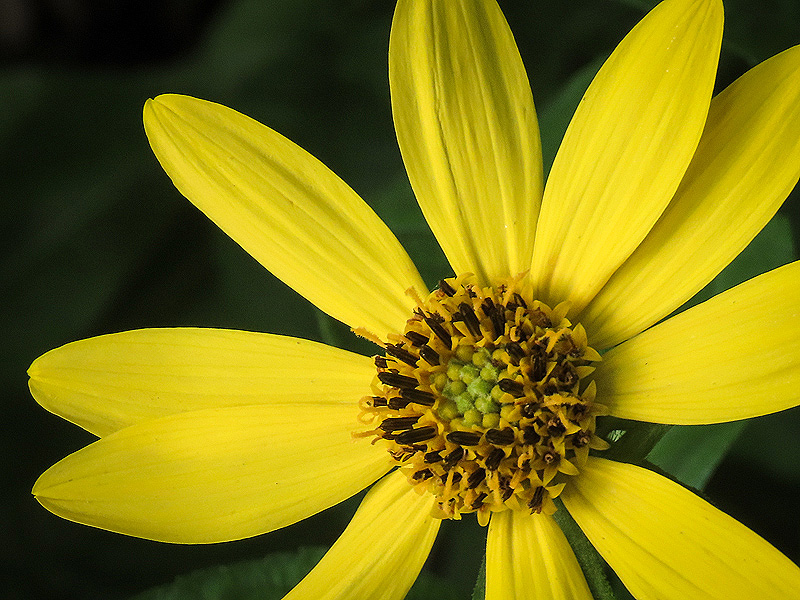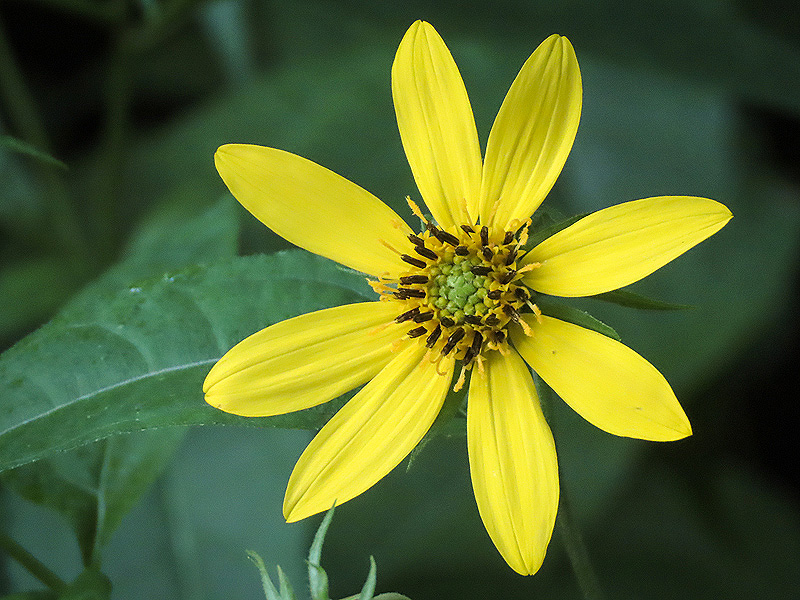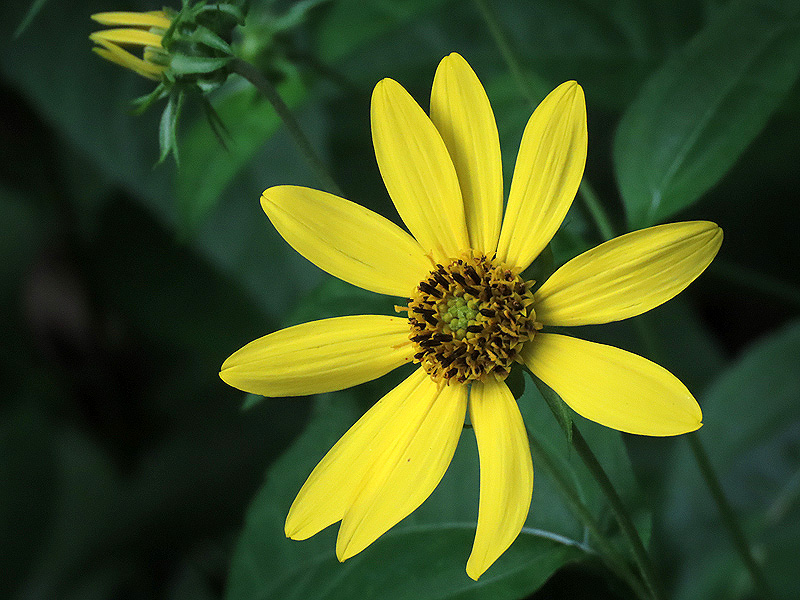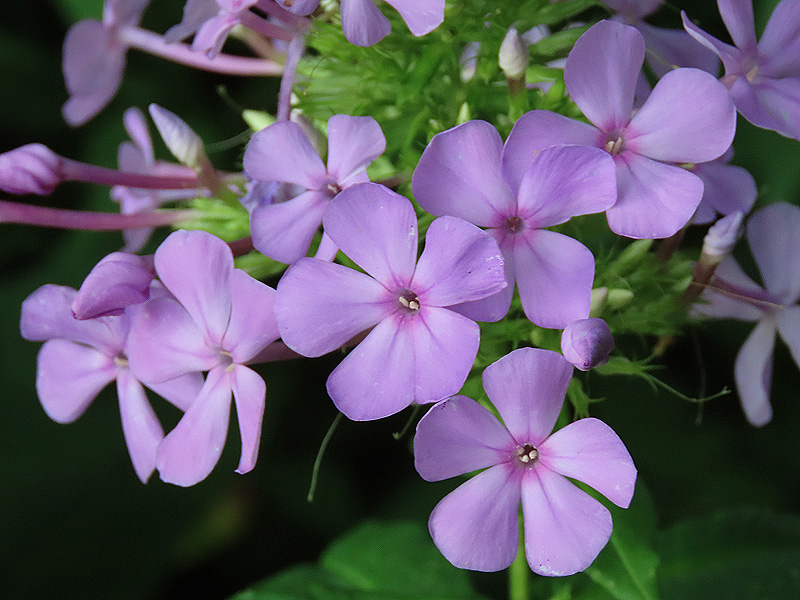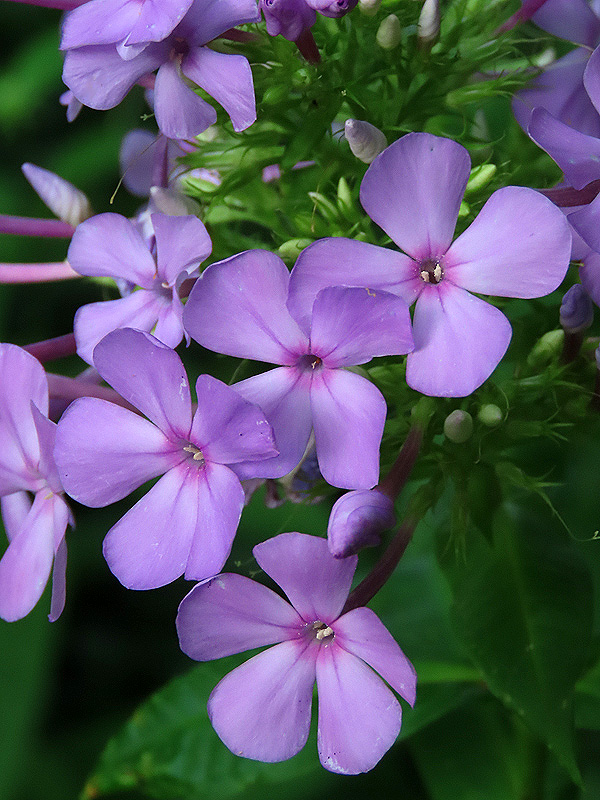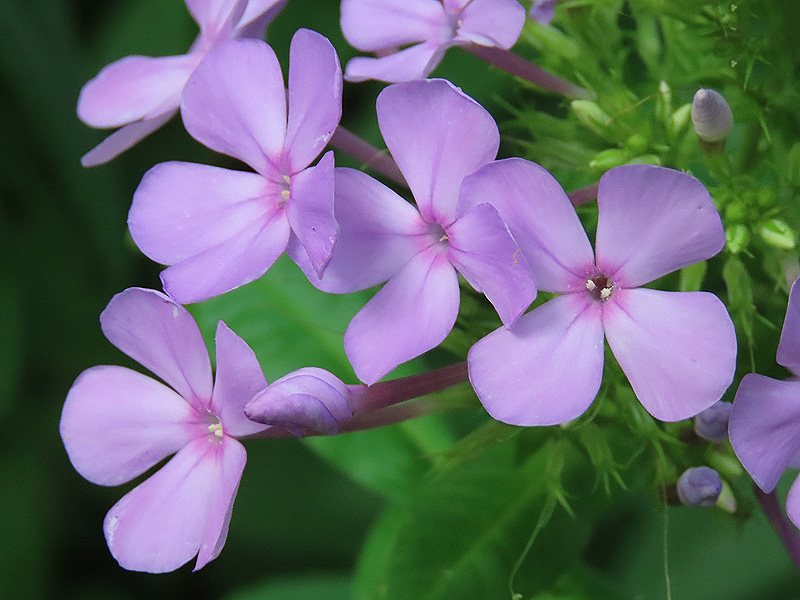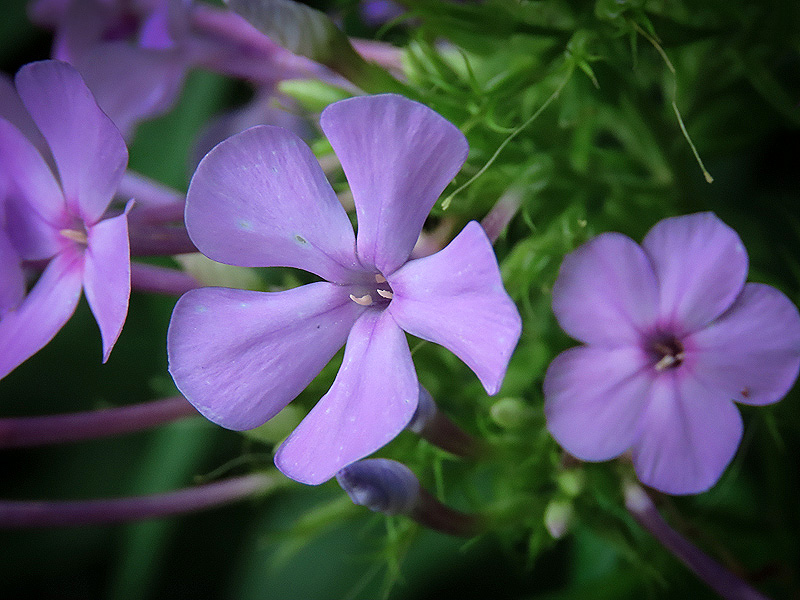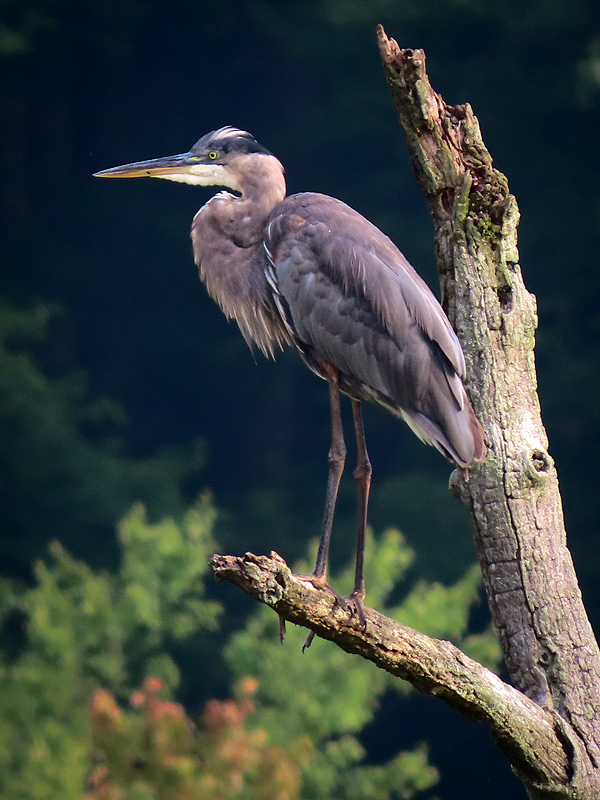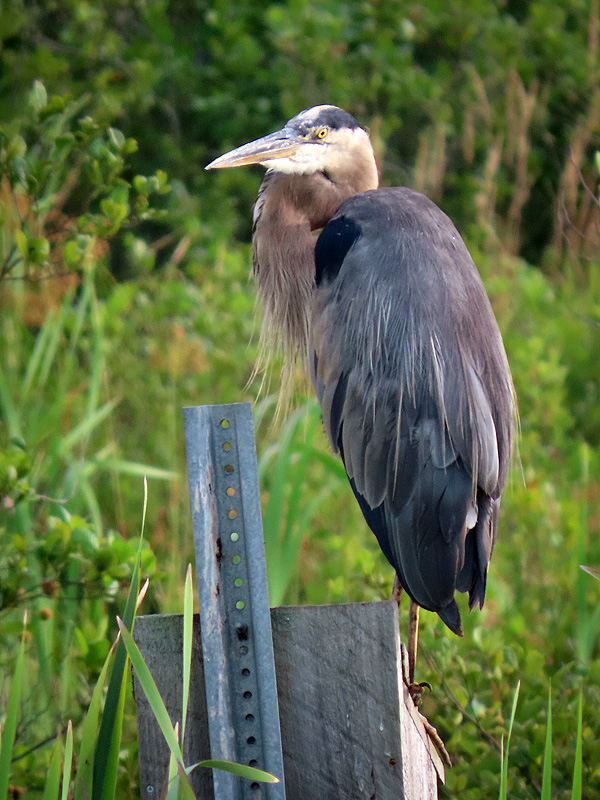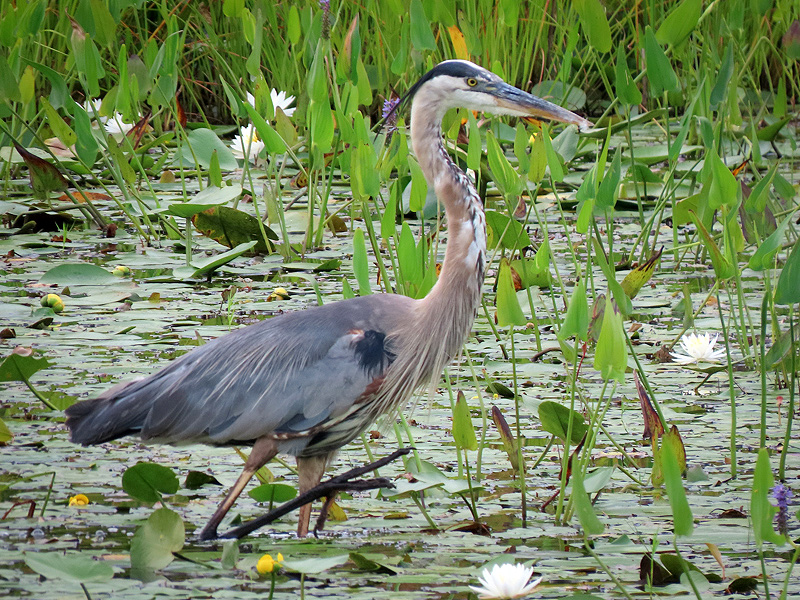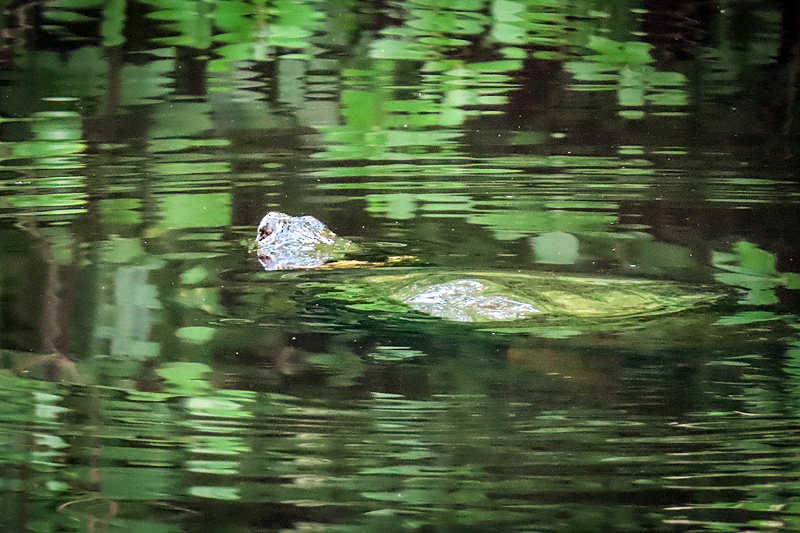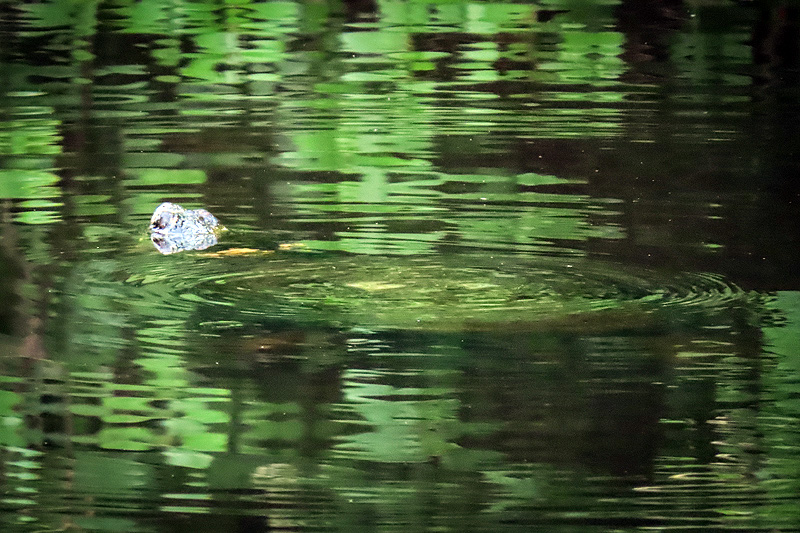Along the Air Line... 2022 - Summer, Part 8 The Air Line Trail in Eastern Connecticut - Stan Malcolm Photos |
HOME: Air Line... 2022 Pages Menu Stan's FlickR Albums |
August 3rd. A morning walk east of Depot Hill Road in Cobalt. Tiger Lily (Lilium lancifolium). |
|
|
|
Silver-spotted Skipper (Epargyreus clarus) at left. |
Bull Thistle (Cirsium vulgare) with a Honey Bee (Apis mellifera) and a Halictid Sweat Bee (Agapostemon virescens) in flight. |
|
|
Jagged Ambush Bug (Phymata pennsylvanica). |
Toxic saliva they inject into insect prey paralyses them in seconds. |
Peck's Skipper (Polites peckius - Honest, make whatever jokes you must) and another Halictid Sweat Bee (Agapostemon virescens). |
|
Cabbage White (Pieris rapae) which, as a child, I learned as the European Cabbage Butterfly, nectaring on Purple Loosestrife (Lythrum salicaria). An invasive on an invasive. |
Silver-spotted Skipper (Epargyreus clarus) on Purple Loosestrife (Lythrum salicaria). The "silver" spot appears white in photos. |
Skippers have a pointed tip to their antennal clubs. Butterflies have blunt rounded tips. Moths have no club. |
Spicebush Swallowtail (Papilio troilus) on Bouncing Bet (Saponaria officinalis). |
|
Ailanthus Webworm moth (Atteva aurea) on Goldenrod (Solidago sp.) . See below for nearby Ailanthus trees. |
Common Buckeye (Junonia coenia). Not common in Connecticut except parhaps at the shore. Historically, our winters are too cold for it to survive - but perhaps that's changing. What we see are butterflies that have come up each year from further south. |
Fun fact: the Distal-less gene that determines the embryological placement of arthropod legs and caterpillar abdominal pro-legs is repurposed to determine the presence/absence and placement of butterfly wing spots. This was first discovered in the Buckeye by Sean B. Carroll and his team. The story is told starting on page 206 of Sean's "Endless Forms Most Beautiful, The New Science of Evo Devo", a book I highly recommend! |
|
|
|
|
|
|
|
Eastern Yellowjacket (Vespula maculifrons) on Queen Anne's lace (Daucus carota). |
|
Spider Wasp (Ceropales maculata), a "kleptoparasite" on other spider wasps: the female lays an egg on a spider caught by a different spider wasp species. The egg hatches before that of the other wasp, eats the egg, then the spider, in the nest of the wasp which first captured the spider. |
Honey Bee (Apis mellifera). |
|
A Flower Fly (Family Syrphidae, Eristalis dimidiata). |
Another Flower Fly (Syrphus torvus or a similar species). |
Deptford Pink (Dianthus armeria). |
|
Ailanthus or Tree of Heaven (Ailanthus altissima). |
The leaves and developing seed pods are distinctive. The tree often spreads along the margins of railroad rights of way and highway margins. It's also common in urban environments. |
As a child in New York City some 65 years ago, I collected the caterpillars of this Ailanthus Silk Moth (Samia cynthia also known as the Cynthia Moth) and reared them to adults. The moth had been imported from Asia in hopes of using their cocoon's silk for weaving but it was found unsuitable. Sadly (unlike most invasives) I'm sorry this species was extirpated in North America - a casualty of Compsilura concinnata, a parasitic fly introduced to control Gypsy Moth (now to be known as Spongy Moth, sigh). See: https://en.wikipedia.org/wiki/Compsilura_concinnata While serving in the US Army in Korea, I had the pleasure of collecting this moth in one of its native lands. The specimen is now in the University of Connecticut collection. The source for this photo is: https://www.projectnoah.org/spottings/708923701 |
While the Ailanthus Silkmoth is long gone, a far more dangerous invasive insect, the Spotted Lanternfly (Lycorma delicatula) is now a threat to many native tree species, having spread from a recent Pennsylvania accidental introduction. It looks like this and should be reported and killed if seen: Read more about this truly nasty pest here: https://portal.ct.gov/caes/caps/caps/spotted-lanternfly---slf Be sure to scroll down to more photos of the insects and the damage they cause. This paragraph makes the point: |
Seed pods turn pink as they mature. |
August 4th. Woodland Sunflower (Helianthus divaricatus) near the Route 85 trailhead. |
Woodland Sunflowers typically have just 8 ray flowers surrounding the many disc flowers... |
...but 10 ray flowers are not uncommon. |
Garden Phlox (Phlox paniculata) also at the Route 85 trailhead. |
|
|
|
August 5th. All three Great Blue Herons (Ardea herodias) at the marsh this morning. |
|
|
Perhaps the largest Snapping Turtle (Chelydra serpentina) I've ever seen at the marsh... |
...slowly cruising west in the channel. |
